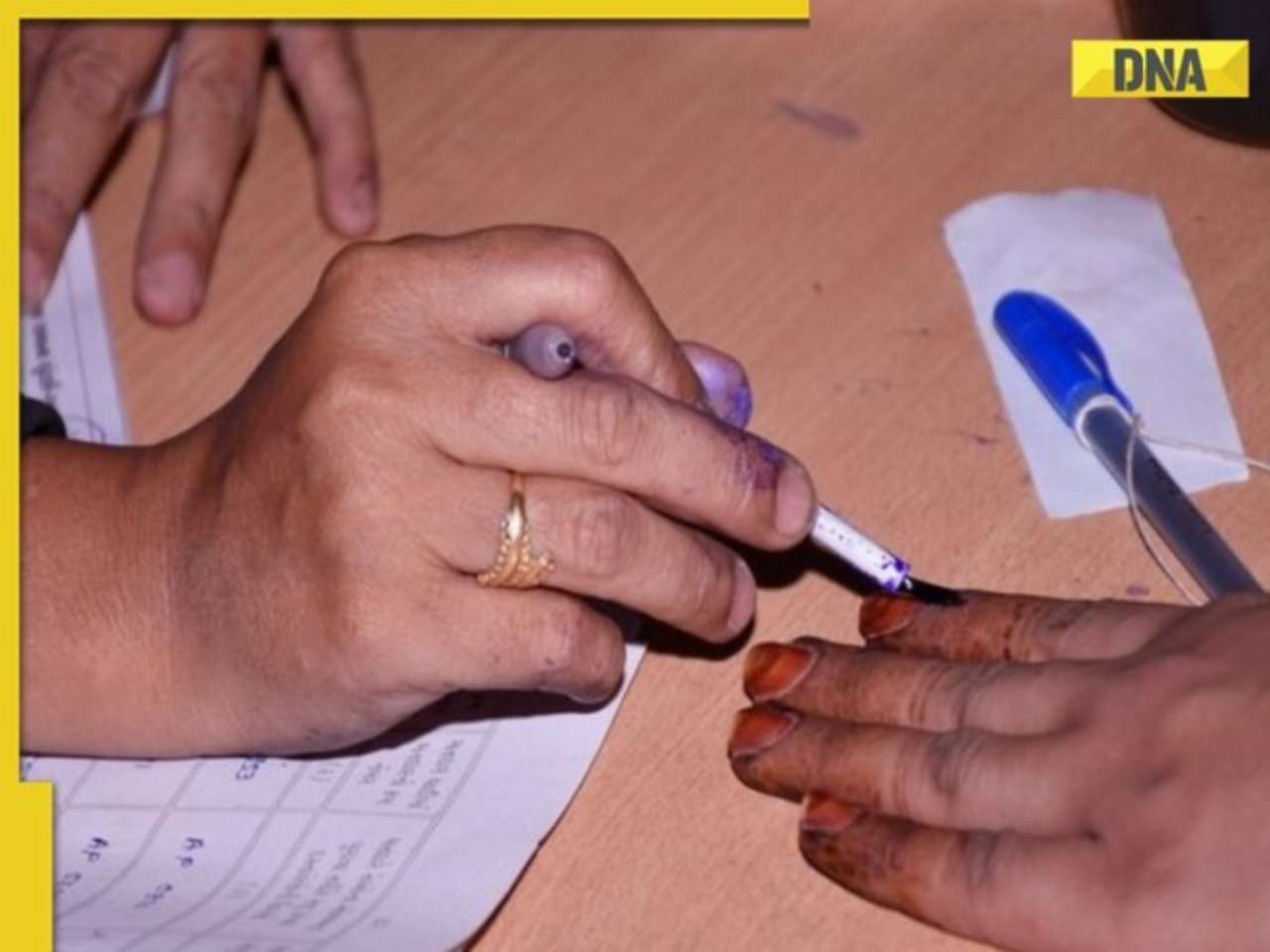Indians, who can speak two or more languages with relative ease, have both sides of their brain’s hemispheres active.
WASHINGTON: Neuroscientists at Dartmouth University in New Hampshire have found why several people around the world such as Indians and Hispanics can process two or more languages at once. The study was presented at the prestigious Society for Neuroscience’s annual meeting in Atlanta, Georgia, on Tuesday.
Using an advanced optical imaging technology called Near Infrared Spectroscopy (NIRS) four researchers from Dartmouth said they found that people who can speak several languages at once leave a “bilingual signature” because of specific increased activity in the part of the brain called Broca’s area.
In fact, people with bilingual and multilingual ability had both the left and right hemispheres of Broca’s area, while people with the ability to speak with just one language had only the left hemisphere of Broca’s area active.
Laura-Ann Petitto, the study’s lead author and the John Wentworth Endowed Chair in Psychological & Brain Sciences at Dartmouth College, said: “Bilinguals appear to engage more of the neural landscape available for language processing than monolinguals, which is very good.”
This would mean that most Indians, especially those in urban and semi-urban areas who can speak two or more languages with relative ease, have both sides of their brain’s hemispheres active. According to Government of India statistics, India is home to 23 official languages and 1652 dialects. Most government correspondence is done in both Hindi and English.
Petitto said: “For decades, people have wondered whether the brains of bilingual people are different from monolinguals. People also worry that the brains of bilingual children are somehow negatively impacted by early experience with two languages. The present findings are significant.”
The team proposes that bilingual language processing provides a new window into the extent of what nature’s neural architecture for language processing could be, if only we used it. Petitto added, “The irony is that we may find it is the monolingual that is not taking full advantage of the neural landscape for language and cognitive processing than nature could have potentially made available.”
She said that this research advances the path for using NIRS brain imaging technology both to understand the neural underpinnings of all human language and especially to discover the secrets of the bilingual brain.
![submenu-img]() IND vs BAN T20 World Cup warm-up: Dominant India beat Bangladesh by 60 runs in New York
IND vs BAN T20 World Cup warm-up: Dominant India beat Bangladesh by 60 runs in New York![submenu-img]() Ankita Lokhande dedicates her career to Sushant Singh Rajput, pens emotional note on Pavitra Rishta completing 15 years
Ankita Lokhande dedicates her career to Sushant Singh Rajput, pens emotional note on Pavitra Rishta completing 15 years![submenu-img]() Amethi Lok Sabha Election 2024 Exit Poll LIVE: Smriti Irani vs KL Sharma, who will win?
Amethi Lok Sabha Election 2024 Exit Poll LIVE: Smriti Irani vs KL Sharma, who will win?![submenu-img]() Mumbai South Lok Sabha Election 2024 Exit Poll: Uddhav Thackeray vs Eknath Shinde, which Sena faction will win the seat?
Mumbai South Lok Sabha Election 2024 Exit Poll: Uddhav Thackeray vs Eknath Shinde, which Sena faction will win the seat?![submenu-img]() Basirhat Lok Sabha Election Exit Poll: Haji Nurul Islam likely to win the seat, according to India Today-Axis My India
Basirhat Lok Sabha Election Exit Poll: Haji Nurul Islam likely to win the seat, according to India Today-Axis My India![submenu-img]() Meet JEE Main topper with AIR 4, plans to pursue BTech from IIT Bombay, he is from...
Meet JEE Main topper with AIR 4, plans to pursue BTech from IIT Bombay, he is from...![submenu-img]() Meet Indian genius who won National Spelling Bee contest in US at age 12, he is from…
Meet Indian genius who won National Spelling Bee contest in US at age 12, he is from…![submenu-img]() Meet man who became IIT Bombay professor at just 22, got sacked from IIT after some years because..
Meet man who became IIT Bombay professor at just 22, got sacked from IIT after some years because..![submenu-img]() Meet Indian genius, son of constable, worked with IIT, NASA, then went missing, was found after years in...
Meet Indian genius, son of constable, worked with IIT, NASA, then went missing, was found after years in...![submenu-img]() Meet IAS officer who was victim of domestic violence, mother of two, cracked UPSC exam in first attempt, she's posted in
Meet IAS officer who was victim of domestic violence, mother of two, cracked UPSC exam in first attempt, she's posted in![submenu-img]() DNA Verified: Did Kangana Ranaut party with gangster Abu Salem? Actress reveals who's with her in viral photo
DNA Verified: Did Kangana Ranaut party with gangster Abu Salem? Actress reveals who's with her in viral photo![submenu-img]() DNA Verified: New Delhi Railway Station to be closed for 4 years? Know the truth here
DNA Verified: New Delhi Railway Station to be closed for 4 years? Know the truth here![submenu-img]() DNA Verified: Did RSS chief Mohan Bhagwat praise Congress during Lok Sabha Elections 2024? Know the truth here
DNA Verified: Did RSS chief Mohan Bhagwat praise Congress during Lok Sabha Elections 2024? Know the truth here![submenu-img]() DNA Verified: Is CAA an anti-Muslim law? Centre terms news report as 'misleading'
DNA Verified: Is CAA an anti-Muslim law? Centre terms news report as 'misleading'![submenu-img]() DNA Verified: Lok Sabha Elections 2024 to be held on April 19? Know truth behind viral message
DNA Verified: Lok Sabha Elections 2024 to be held on April 19? Know truth behind viral message![submenu-img]() Streaming This Week: Panchayat season 3, Swatantrya Veer Savarkar, Illegal season 3, latest OTT releases to binge-watch
Streaming This Week: Panchayat season 3, Swatantrya Veer Savarkar, Illegal season 3, latest OTT releases to binge-watch![submenu-img]() Avneet Kaur shines in navy blue gown with shimmery trail at Cannes 2024, fans say 'she is unstoppable now'
Avneet Kaur shines in navy blue gown with shimmery trail at Cannes 2024, fans say 'she is unstoppable now'![submenu-img]() Assamese actress Aimee Baruah wins hearts as she represents her culture in saree with 200-year-old motif at Cannes
Assamese actress Aimee Baruah wins hearts as she represents her culture in saree with 200-year-old motif at Cannes ![submenu-img]() Aditi Rao Hydari's monochrome gown at Cannes Film Festival divides social media: 'We love her but not the dress'
Aditi Rao Hydari's monochrome gown at Cannes Film Festival divides social media: 'We love her but not the dress'![submenu-img]() AI models play volley ball on beach in bikini
AI models play volley ball on beach in bikini![submenu-img]() Lok Sabha Elections 2024: What are exit polls? When and how are they conducted?
Lok Sabha Elections 2024: What are exit polls? When and how are they conducted?![submenu-img]() DNA Explainer: Why was Iranian president Ebrahim Raisi, killed in helicopter crash, regarded as ‘Butcher of Tehran’?
DNA Explainer: Why was Iranian president Ebrahim Raisi, killed in helicopter crash, regarded as ‘Butcher of Tehran’?![submenu-img]() DNA Explainer: Why did deceased Iranian President Ebrahim Raisi wear black turban?
DNA Explainer: Why did deceased Iranian President Ebrahim Raisi wear black turban?![submenu-img]() Iran President Ebrahim Raisi's death: Will it impact gold, oil prices and stock markets?
Iran President Ebrahim Raisi's death: Will it impact gold, oil prices and stock markets?![submenu-img]() Haryana Political Crisis: Will 3 independent MLAs support withdrawal impact the present Nayab Saini led-BJP government?
Haryana Political Crisis: Will 3 independent MLAs support withdrawal impact the present Nayab Saini led-BJP government?![submenu-img]() Ankita Lokhande dedicates her career to Sushant Singh Rajput, pens emotional note on Pavitra Rishta completing 15 years
Ankita Lokhande dedicates her career to Sushant Singh Rajput, pens emotional note on Pavitra Rishta completing 15 years![submenu-img]() Kajal Agarwal says south heroines are 'stereotyped', explains why Bollywood has meatier roles for married actresses
Kajal Agarwal says south heroines are 'stereotyped', explains why Bollywood has meatier roles for married actresses![submenu-img]() Before Rani Mukerji, this actress was finalised for Kabhi Alvida Naa Kehna, she rejected to star opposite SRK because...
Before Rani Mukerji, this actress was finalised for Kabhi Alvida Naa Kehna, she rejected to star opposite SRK because...![submenu-img]() Amid breakup rumours with Malaika Arora, Arjun Kapoor says 'we have two choices in life', shares cryptic post on Insta
Amid breakup rumours with Malaika Arora, Arjun Kapoor says 'we have two choices in life', shares cryptic post on Insta![submenu-img]() Who is Alexander Ilic? Mystery man spotted with Hardik Pandya's wife Natasa Stankovic; earlier linked to Disha, Tripti
Who is Alexander Ilic? Mystery man spotted with Hardik Pandya's wife Natasa Stankovic; earlier linked to Disha, Tripti![submenu-img]() Viral video: Little girl dances her heart out to Neha Kakkar's Balenciaga, internet loves it
Viral video: Little girl dances her heart out to Neha Kakkar's Balenciaga, internet loves it![submenu-img]() Caught on CCTV: Leopard's jaw-dropping leap over wall to snatch hen stuns internet, watch
Caught on CCTV: Leopard's jaw-dropping leap over wall to snatch hen stuns internet, watch![submenu-img]() NASA warns of strong solar storm with blackouts, likely to hit Earth on…
NASA warns of strong solar storm with blackouts, likely to hit Earth on…![submenu-img]() Nita Ambani nearly missed Anant Ambani, Radhika Merchant's 2nd pre-wedding bash due to....
Nita Ambani nearly missed Anant Ambani, Radhika Merchant's 2nd pre-wedding bash due to....![submenu-img]() Viral video: Little girl’s adorable dance to 'Ruki Sukhi Roti' will melt your heart, watch
Viral video: Little girl’s adorable dance to 'Ruki Sukhi Roti' will melt your heart, watch























































)
)
)
)
)
)